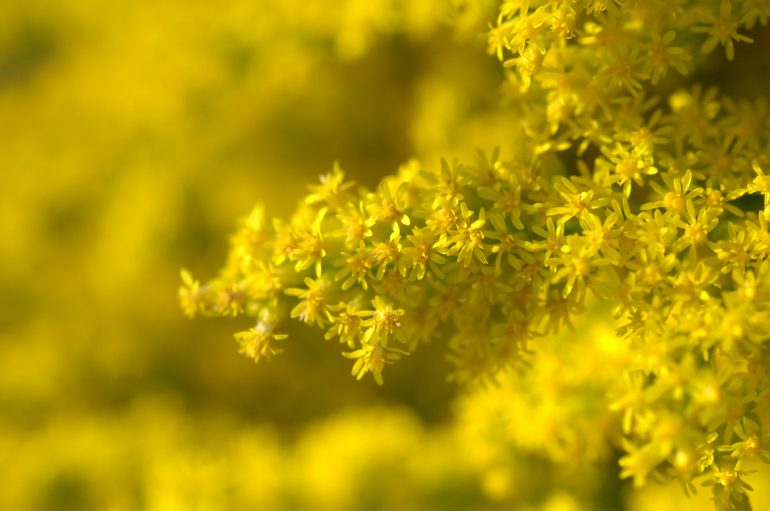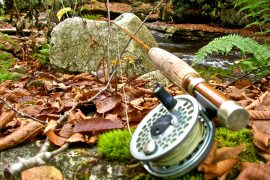I am a professional conservation biologist and a life-long Christian. While I don’t claim to be particularly outstanding at either, I certainly hope that I am improving at both, and I do know that both color the way I look at the world. The way I see it, my job is to do my best to protect the wonders of nature but my duty is to protect the wonders of God. All of the wonders, no matter how seemingly insignificant they might seem. And, to be honest, a lot of them do seem pretty insignificant.
When most people, even committed conservationists and environmentalists, think of endangered species the first things that come to mind are usually the big, exciting critters. Tigers. Polar Bears. Wolves. They are often called “charismatic megafauna” because they get folks interested in species and habitat conservation and, not coincidentally, to open up wallets for their preservation. That’s the reason that most environmental nonprofits use pandas and elephants on their logos, not mosses or lichens. When I received my zoology degree twenty years ago my intention was to work with wolves, or something equally exciting and awesome. As I started my career in my home state of Kentucky I quickly realized that many of the rare or declining species aren’t particularly exciting or awesome, at least not in any obvious way. A lot of them are really rather plain. But they are unique or different in some way from their run-of-the-mill cousins, and they are disappearing mostly due to human actions. These species don’t have the good sense to be generalists and live any-old-where; instead they are found in very specific habitats that, coincidentally, often make good strip malls, subdivisions, or farms. Biologists attribute this rarity to evolution; these species adapted to exploit very specific niches that other species did not exploit, therefore they dealt with less direct competition. Personally, while I have no real doubts that is the case, I can’t help but see the hand of God involved in the process somewhere as well.
Which brings me to Solidago shortii, the Short’s goldenrod, a federally endangered plant and one of the rarest species around. At first glance Short’s goldenrod looks like many other goldenrods, a big group that is familiar to many people as a roadside wildflower (or “weed” if you don’t want them in your pasture). In fact, on second or third glance it still looks pretty unremarkable. There is absolutely nothing showy or impressive about a clump of Short’s goldenrod – it really does look pretty much like a roadside weed and is even found mostly in roadside pastures. You actually have to get out of your car and touch their smooth leaves to tell that this might not be a young Canada goldenrod (Solidago canadensis), which is often found in similar areas and has fairly hairy leaves.[ref]Jones, R. L. 2005. Plant Life of Kentucky. University of Kentucky Press: Lexington, Kentucky. 834 pp.[/ref] After feeling smooth leaves, if you see that the goldenrod grows in a clump of more-or-less connected roots instead of individual stems popping out of the ground then you may just be touching a very rare species. And I should also mention that you also have to be standing in a very specific location – Short’s goldenrod is only found in two small sites in the world.
First identified by Charles Short in Louisville in 1840 – the plant is not “short”, it’s just the discoverer’s name – the entire known population was destroyed by the development of the McAlpine Dam to open up the river to barge traffic at the falls of the Ohio River in Louisville. Thought extinct for decades, in the 1930s botanist Lucy Braun located another population 100 miles to the east at a small bend in the much smaller Licking River.[ref]Skinner, D. 2004. Volunteers and Staff Help One of Kentucky’s Rarest Plants. KSNPC Naturally Kentucky 42:p.2.[/ref] A two mile radius around Braun’s discovery is the only place in Kentucky where this plant is now found, although in the 1990s a clump was found at one equally small site in southern Indiana on the Blue River about 40 miles west of the McAlpine Dam. What do these three dots on the map have in common, other than rivers? There are a lot of river miles between the Licking River and the Blue River. Why are these plants only found at these particular spots? We don’t know for sure but we can guess.
Quite a bit of the surviving Kentucky population is along a historic bison trace that bisects Blue Licks Battlefield State Park and the neighboring Short’s Goldenrod State Nature Preserve. A bison trace also goes through the Blue River site. It is believed that the regular disturbance created by the bison’s migration through these tight areas created by the topography of the rivers created the bare areas necessary for the plant’s survival. Daniel Boone himself claimed he once saw a herd at Blue Licks so large that it took three days for it to pass, even though they never stopped running. These herds, packed into the relatively small bend in the Licking River at the salt lick that gives Blue Licks its name, left virtually no vegetation in their wake. Except for clumps of Short’s goldenrod. This plant is perfectly adapted to trampling and bare soils. Of course, the bison herds are long gone from the South, and the once open glades have been farms and woodlots for well over a century. While Short’s goldenrod has proven capable of lingering in overgrown areas it needs plenty of sunlight to thrive, so the establishment of trees, crops, and other plants has dramatically changed its former habitat. It is thought that the early settlers’ livestock mimicked the bison’s natural disturbance to some extent and help the goldenrod survive through early settlement. However, by the mid-20th century more intensive farming practices and the introduction of exotic invasive species became prevalent, and the population dwindled.[ref]White, D. 1996. Short’s Goldenrod: A plant with a past. KSNPC Naturally Kentucky 17: p. 5.[/ref] Much of the Kentucky population that Braun found is now gone and the habitat severely degraded.
This is where conservation biologists come into the picture. Since at least 1986, when the plant was placed on the federal endangered species a handful of folks from government agencies and conservation groups have spent countless hours weeding and spraying and burning and prodding individual clumps of these plants. I’ve been one of those folks since 2006. Currently the two biggest threats to its habitat are canopy closure and invasive species. Since farming kept this area open for more than a century before becoming fallow, most of the trees shading the goldenrod are relatively young Eastern red-cedars. Many winter days, long after the goldenrod has bloomed in late September, have been spent felling, piling, and burning cedars near the goldenrod sites. Of course, red-cedars are just naturally moving into areas where bison would have kept them out a couple of centuries ago. Not all the competition is quite this natural. The disturbed areas preferred by the goldenrod are precisely the kinds of places many non-native invasive plant species find inviting. Particularly troublesome species on these sites include crown vetch (Coronilla varia), sericea lespedeza (Lespedeza cuneata), yellow and white sweet clover (Melilotus spp), and Queen Anne’s lace (Daucus carota). Many long summer days (in Kentucky’s 90° heat with 90% humidity) are spent hand pulling sweet clover and Queen Anne’s lace from these old pastures where Short’s goldenrod is left, after the weeds have matured but before they have set seed. Hand pulling is certainly slow, but it helps reduce the amount of herbicides used on the goldenrod habitat. Prescribed fire is also used in Short’s goldenrod recovery; fire was believed to be a natural part of many glade and grassland ecosystems in America, and an important source of disturbance historically.
All of this work has taken place on protected conservation areas, but Kentucky is about 95% privately owned. There is only a limited amount of property conserved in the Short’s home range. A new project was recently initiated by the US Fish and Wildlife Service, the agency responsible for taking care of America’s endangered plants and animals, which involves growing Short’s goldenrod seedlings in greenhouse and planting them in suitable habitat on legally protected conservation property along the Licking River but slightly outside its known natural range. Some botanists aren’t too thrilled about this because they say that planting rare species in an area it was never found naturally is, well, unnatural. Supporters of the planting project will say that it may or may not be completely natural, but at least they are alive and thriving in their new homes. I’m on their side – we need to save our rare species by whatever means are most practical, and in today’s world of bulldozers, herbicide, and climate change, natural is in the eye of the beholder.
If you think that this sounds like a lot of work to help a scraggly roadside flower, you are correct – it is a lot of work. I’ve spent a lot of hours, days, weeks, over the last decade pulling weeds encroaching on clumps of Short’s goldenrod, only to see the weeds looks healthier the next year. A lot of other folks have as well. If you ask most of them why they do it they’ll give you the standard list of “Reasons to Protect Biodiversity,” which include the potential for undiscovered medicines and other things along those lines, most of which are centered on how the species may benefit us someday. And I have no doubt that the biologists I’ve known over the years are sincere when they talk about biodiversity in these terms. But none of those “scientific” reasons for biodiversity have ever done much for me. And while I understand the appeal of a deity-free evolutionary process to arrive at species diversity, that doesn’t do much for me either.
I am amazed on a daily basis when I see all the different critters and plants and ecosystems just in my little neck of the woods. I see the look on my three-year old son’s face as he watches sycamore leaves float down the creek, or a Great Blue Heron wading in it. When he gets older, I want him and his brother to be able to see Short’s goldenrods (and tigers and polar bears and wolves). Despite all of my scientific training, I can’t help but feel that the Man Upstairs is behind all this biodiversity at some level – exactly how I can’t say, but I know He’s in there somewhere. Of course I must admit that I am not a very curious fellow, particularly for a biologist. When folks get all worked up trying to figure out the motivations of God or refute his existence by the perceived lack of logical motivations – “why would He bother making dozens of goldenrods, much less something as specialized as Short’s goldenrod” – I just shrug and say, “I have no idea”. As far as I’m concerned, all the answers are in my favorite part of the Bible, the Book of Job. I am perfectly content despising myself and repenting in dust and ashes instead of questioning God’s motivations. I have no idea why He would create Short’s goldenrod, why He would use a process as slow and complex as evolution to create it, or why He would allow human actions to endanger it. All that is way above my pay-grade. All I know is that he did make them, somehow, and we are hurting them. When I try to do my small part to help out those scraggly little clumps and their equally non-descript endangered brethren, it is because in my heart I believe that the Lord made them and proclaimed that they were good. And that is good enough for me.




